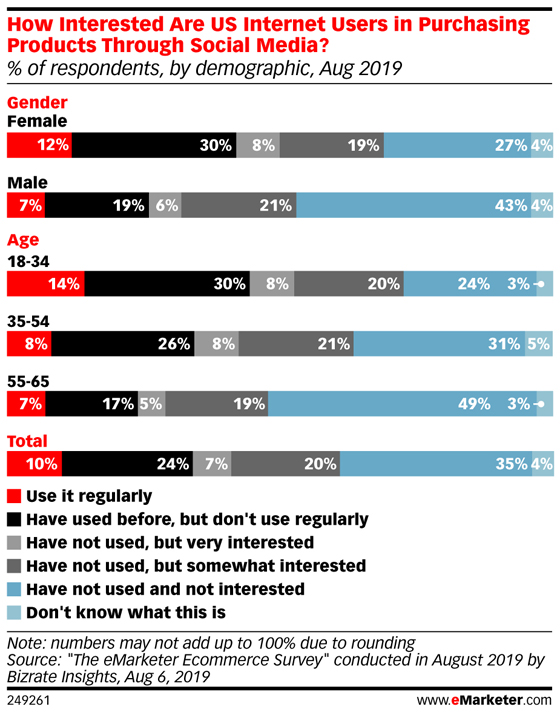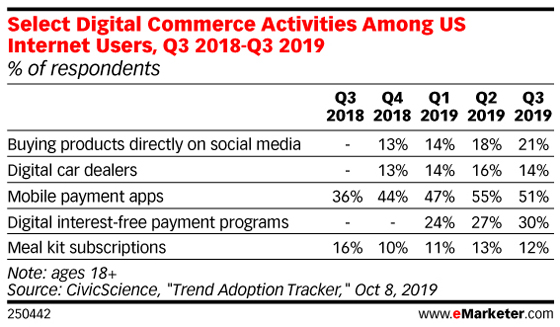Since Instagram rolled out its Checkout feature earlier this year, brands have begun linking influencer content to shopping tools as a way to drive—and measure—direct sales. Should the platform hide likes from public view, which it began testing in the US this week, influencer marketers could be forced to look beyond vanity metrics to more advanced measurement tools, including social commerce and in-store purchase behavior.
“There are many ways beyond likes to measure an influencer program,” said Danielle Wiley, founder and CEO of Sway Group, an influencer marketing agency. “Ultimately, engagement, actual impressions, downloads, saves and other metrics will prevail as KPIs because likes have never truly been an indicator of success.”
In addition to hiding likes for select US users, Instagram is also hiding likes from public view for select users in Australia, Brazil, Canada, Ireland, Italy, Japan and New Zealand. So far, the company has neither released findings from the test nor indicated that the removal of likes will be become permanent.
Some high-profile influencers and celebrities have spoken out against hiding likes, but marketers see it as an opportunity to move away from such metrics, which have already taken a backseat to more advanced strategies and measurement tools.
“Brands will start to look beyond likes and engagement numbers to measure if a campaign is successful or not, including tying directly to sales,” said Daniel Schotland, COO of influencer marketing platform Linqia. “Brands have already started to implement tools to minimize the steps between post and purchase, including adding universal checkout and add-to-cart options.”
In the past year, Instagram rolled out several new ways for brands and influencers to link directly to ecommerce platforms within and outside the platform. Instagram’s “swipe up” feature allowed business accounts with more than 10,000 followers to add a URL within an Instagram Story. The Facebook-owned platform has since expanded this option to creator accounts, giving influencers with more than 10,000 followers access to the tool.
“We are already seeing marketers adopting more sophisticated measurement capabilities, including referral codes and swipe up affiliate links in stories,” said Lyle Stevens, co-founder and CEO of influencer marketing firm Mavrck. “Once it is available for more creators, we believe shoppable posts will also become more prevalent with influencers.”
In March, Instagram launched “Checkout on Instagram,” a new feature that helps brands streamline checkout directly within the app for products seen on Instagram. Shortly after, Instagram started letting influencer partners add the shopping component to posts of their own, as well as an additional feature that allows influencers to create sponsored content within the feed.
Consumer interest in social commerce isn’t yet widespread, but adoption has been on the rise. According to a survey conducted in August 2019 by Bizrate Insights, more than a third of US internet users have purchased products through social media, but only 10% did so regularly. A nearly equal portion (35%) of respondents had no interest in shopping on social media.
A survey from CivicScience released in October found adoption to be slightly lower, but indicated that social commerce is growing. In Q4 2018, just 13% of US internet users said they have made a purchase directly through social media, with adoption rising to 21% in Q3 2019.
But direct social commerce isn’t the only way for online and in-store retailers to measure the effects of influencer marketing. The industry is now using more advanced measurements that could become more common if marketers stopped relying on likes.
“Depending on where brands are looking to be in the marketing funnel, you can expect to see new performance and attribution metrics,” said Krishna Subramanian, co-founder of influencer marketing company Captiv8. “Brands focused on the top of the funnel will start to lean into brand lift and purchase intent. Brands focused on the bottom of the funnel will lean into sales, conversions and downloads.”
For example, marketing agency Influential has partnered with market research company IRI to compare in-store shopping data with consumer packaged goods (CPG)-brand influencer campaigns. By adding the influencer component to a basket purchase analysis, brands can map back to what consumers are buying at brick-and-mortar retail. “IRI has data across a number of retailers,” said Ryan Detert, co-founder and CEO of Influential. “And when we run a campaign, we’ll be able to tell [whether it was successful]based off purchase behavior.”
–
Seeking to build and grow your brand using the force of consumer insight, strategic foresight, creative disruption and technology prowess? Talk to us at +9714 3867728 or mail: info@groupisd.com or visit www.groupisd.com






